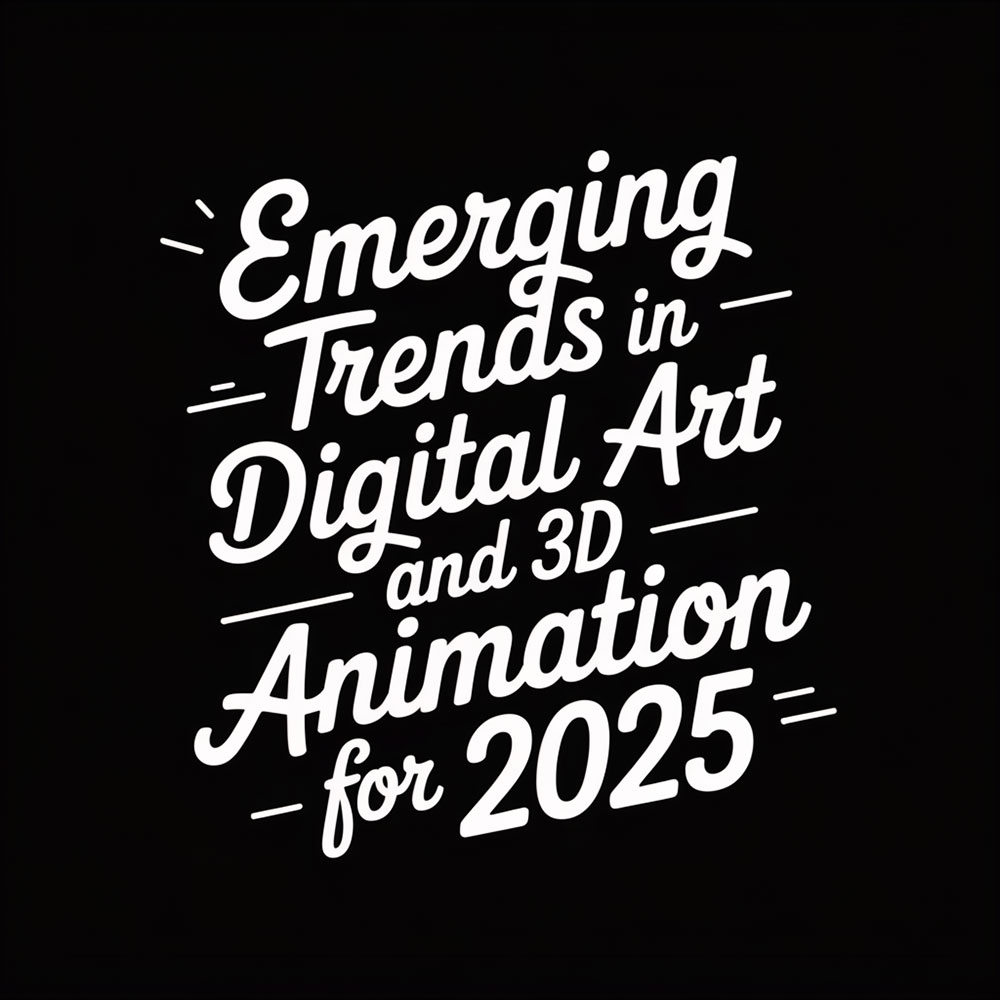Emerging Trends in Digital Art and 3D Animation for 2025

As we progress through 2025, the digital art and 3D animation landscape is experiencing significant transformations. Technological advancements and evolving artistic approaches are reshaping the industry, offering new opportunities and challenges for artists and creators. This article explores the key trends influencing digital artists and animators this year.
1. Hyper-Realistic 3D Art
The demand for lifelike 3D art has surged, driven by advancements in rendering software and hardware. Artists can now create intricate details, from subtle facial expressions to complex textures, enhancing the viewer's immersive experience. This trend is particularly prominent in gaming, film, and virtual reality sectors.
2. Real-Time Rendering Revolution
The demand for instant feedback has led to widespread adoption of real-time rendering technologies. Software advancements are providing unparalleled realism with real-time global illumination and ray tracing, making presentations more interactive and visually stunning. This trend is transforming how artists work, allowing for more experimentation and rapid iteration.
3. Integration of Artificial Intelligence in Creative Processes
Artificial Intelligence (AI) is increasingly becoming a vital tool for artists, automating repetitive tasks and offering new creative possibilities. AI-powered features in software like Adobe Photoshop 2025 allow for effortless object removal, background generation, and precise subject selection. Adobe's experimental AI features now enable artists to generate complete 3D scenes and animate text with greater efficiency, enabling creators to focus more on the creative aspects of their work.
4. Virtual and Augmented Reality (VR/AR) Applications
VR and AR technologies are revolutionizing how art is created and consumed. Artists are designing immersive experiences that allow audiences to interact with art in novel ways. This shift is expanding the boundaries of traditional art forms, leading to more engaging and participatory creations that blur the line between viewer and art.
5. The Rise of Phygital Art
The convergence of physical and digital art, known as phygital art, is gaining significant momentum in 2025. This innovative approach combines tangible artworks with digital elements, creating unique pieces that offer enriched artistic experiences. From sculptures with embedded AR components to paintings that transform when viewed through digital interfaces, phygital art is opening new frontiers for artistic expression.
6. Adoption of New Tools and Software
The introduction of innovative tools is streamlining the creative workflow. For instance, Maxon's release of ZBrush 2025.1 includes a Quick Polygroup Brush and enhanced integration with the Redshift renderer, simplifying the sculpting process for artists. AI-powered editing tools are also automating complex tasks in the animation process, allowing artists to focus more on creativity and storytelling.
7. Emphasis on Eco-Themed and Inclusive Art
Artists are increasingly focusing on themes of environmental sustainability and inclusivity. Eco-themed art reflects growing ecological awareness, while inclusive design ensures representation of diverse cultures and identities. Technological advancements are enabling more accurate representation of diverse characters in animation—for instance, new algorithms now allow for realistic animation of afro-textured hair, marking a significant step towards inclusivity in the industry. These themes resonate with a broader audience and reflect societal shifts towards inclusivity and environmental consciousness.
8. Growth of Stylized Art Forms: Retro Futurism and Neo Brutalism
While realism remains popular, there's a growing appreciation for stylized art that emphasizes unique artistic expressions. Artistic styles such as Retro Futurism and Neo Brutalism are resurging in popularity, blending nostalgic elements with futuristic designs. Maximalism, characterized by bold colors and complex compositions, is gaining traction, offering a counterbalance to minimalist trends and allowing artists to explore more elaborate designs.
9. Enhanced Collaboration Through Global Platforms
The rise of digital platforms has facilitated greater collaboration among artists worldwide. These platforms enable sharing of resources, techniques, and feedback, fostering a more interconnected and supportive artistic community. Virtual studios and cloud-based workflows have become standard, allowing teams to work seamlessly across different time zones and geographical locations.
Conclusion
2025 is a pivotal year for digital art and 3D animation, marked by technological innovations and evolving artistic trends. The convergence of AI, real-time rendering, VR/AR technologies, and diverse artistic styles is creating unprecedented opportunities for creative expression. Artists who embrace these developments are well-positioned to push the boundaries of creativity and redefine the future of digital art.